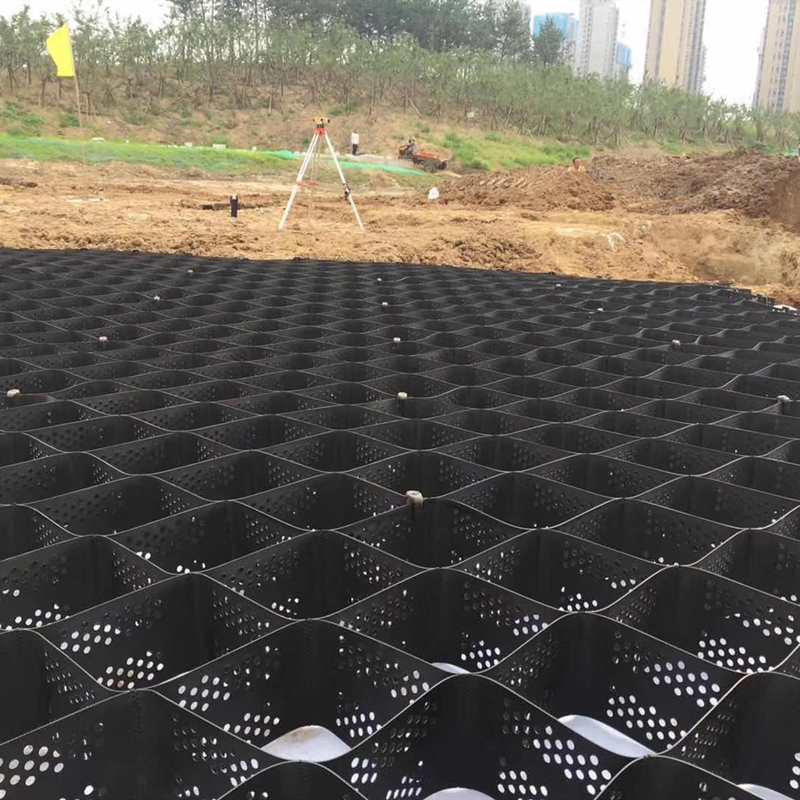HDPE土工格室
米国におけるジオセル路盤補強
Geocell roadbed reinforcement in the United States
- Geocell
- Geomembrane
- Uniaxial geogrid
- Biaxial geogrid
- Geotextile
- EVOH Geomembrane
- Warp-knitted geogrid
- Geosynthetic Clay Liner
- Composite Geonet
- Self - adhesive waterproof membrane
- Mining high-strength polyester fiber mesh
- Composite anti-permeability material
- Graebel Fix
- Safety net
- Weed control sheet
- Flexible container bag
- Dimpled Drainage Sheet
- Composite Materials
- Other synthetic materials
- Geomembrane in environmental protection engineering
- Application of geomembrane in water conservancy
- Application of geomembrane in aquaculture
- Application of geomembrane in chemical industry
- Geomembrane in mining engineering
- geocell for retaining walls
- geocell for slope stabilization
- geocell for road construction
- geocell for permafrost
- Geotextiles in slope protection projects
- Project to Strengthen Weak Infrastructure
- Landfill Isolation Project
- Application of geocell in mining area
- Application of HDPE geogrid in retaining wall
- geocell for retaining walls
- geocell for beach erosion
- geocell for landfill
- geocell for drainage
- Application of three-dimensional composite drainage network in landfill
- Application of three-dimensional composite drainage network engineering
- Parking lot new product application
Product Detail
Geocell roadbed reinforcement has become an increasingly valuable technique within the United States' infrastructure development and maintenance. Here's a report outlining its key aspects:
Key Applications and Benefits:
Enhanced Load Distribution:
Geocells create a three-dimensional confinement system that distributes loads laterally, significantly reducing vertical stress on the subgrade. This is particularly crucial in areas with weak or unstable soils.
Improved Road Stability:
By confining infill materials like gravel or crushed stone, geocells minimize rutting, deformation, and other forms of pavement distress. This leads to longer road lifespans and reduced maintenance costs.
Reduced Material Requirements:
Geocells allow for the use of lower-quality infill materials, reducing the need for expensive, high-grade aggregates. This can result in significant cost savings.
Also they reduce the amount of infill needed.
Erosion Control:
Geocells effectively stabilize slopes and embankments, preventing erosion and protecting roadbeds from damage caused by water runoff.

Features
Applications Across Diverse Environments:
Geocells are used in a wide range of applications, including:
Highway and roadway construction
Unpaved road reinforcement
Railway track stabilization
Airport runway and taxiway construction
Construction of access roads in remote areas.
Key Considerations in the U.S.:
Infrastructure Demands:
The U.S. has a vast and aging infrastructure network, creating a significant need for effective and durable road reinforcement solutions. Geocells are well-suited to address these challenges.
Environmental Regulations:
Increasingly stringent environmental regulations are driving the adoption of sustainable construction practices. Geocells, especially those made from recycled materials, offer an environmentally friendly alternative to traditional methods.
Varied Soil Conditions:
The U.S. encompasses a wide range of soil conditions, from soft clay to sandy soils. Geocells provide a versatile solution that can be adapted to different soil types.
Technological Advancements:

Ongoing research and development are leading to advancements in geocell materials and design, further enhancing their performance and durability.
Department of Transportation Usage:
Many state DOT's are doing studies, and implementing geocell technology into their road construction and repair proceedures. This is helping to create better and longer lasting roads.
In summary:
Geocell roadbed reinforcement is a valuable and increasingly utilized technique in the United States. Its ability to enhance load distribution, improve road stability, and reduce material requirements makes it a cost-effective and sustainable solution for infrastructure development and maintenance.




